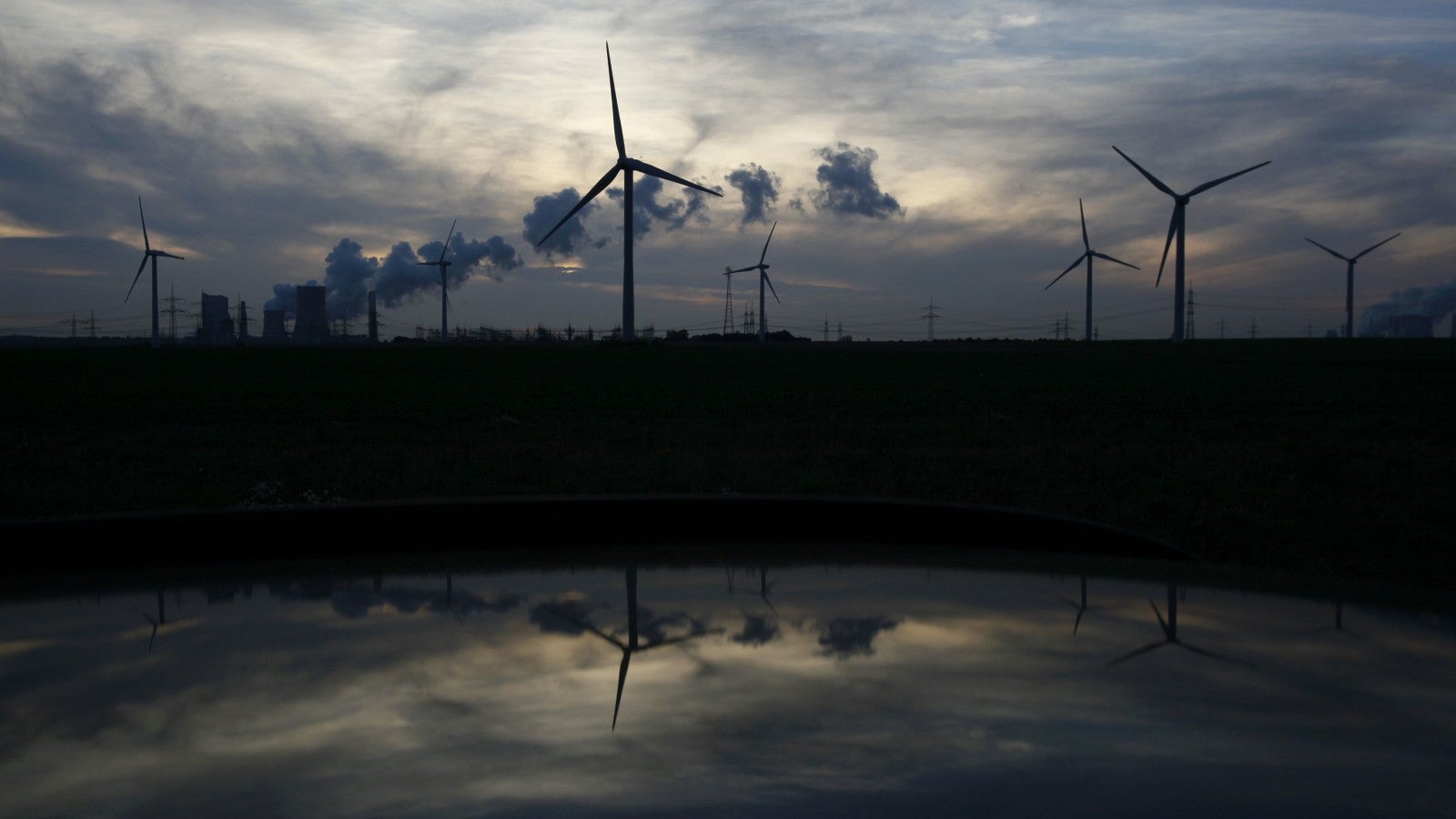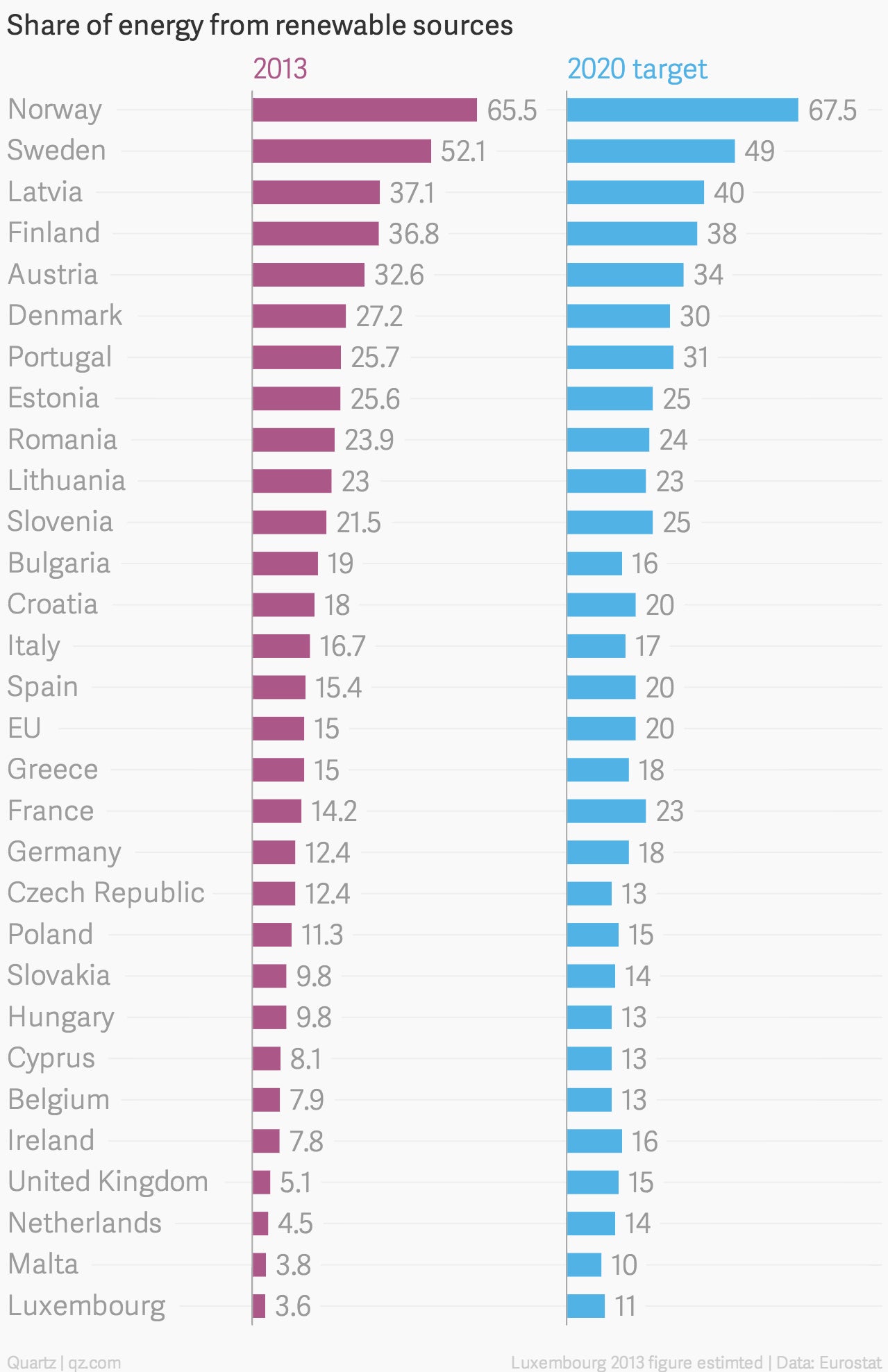Three European countries have already hit their 2020 renewable energy goals
In 2010, the European Union set a goal of producing 20% of its total energy from renewable sources by 2020. The latest figures show that the union as a whole reached the 15% mark in 2013. But the combined figure includes some countries already exceeding their targets, while others lag far behind.


In 2010, the European Union set a goal of producing 20% of its total energy from renewable sources by 2020. The latest figures show that the union as a whole reached the 15% mark in 2013. But the combined figure includes some countries already exceeding their targets, while others lag far behind.
Three out of the 28 EU member states have surpassed their 2020 goals. Sweden had one of the most ambitious goals, planning to produce 49% of its energy from renewable sources by 2020. It’s already gone further than that, with 52.1% from renewable sources in 2013. Bulgaria and Estonia also are producing more than they had been targeting, five years ahead of schedule.
Lithuainia has hit its 23% target, while Romania and Italy are within half a percentage point of theirs.

Some countries, like Norway, have goals way above the collective 20%, and are getting close to achieving them. And some countries do particularly well in certain technologies, like wind power in Denmark.
But other countries are lagging far behind. The UK, which aims to produce 15% of its total energy from renewable sources by 2020, was only managing 5.1% in 2013 (though it did manage to produce 15% of electricity from renewable sources that year). The Netherlands, France, and Ireland are all far away from their aims.
Meanwhile, several EU member states have been accused of aiding the export and development of polluting technologies, even while making efforts to clean up at home.